HOME PAGE
The National Audubon Society Grass Mountain Christmas Bird Count

White-headed Woodpecker © 2014 Callyn Yorke
The 2018 Grass Mt. CBC is scheduled for Wednesday, December 26 .
Please contact Jayde Blair for the CAGM 2018 area assignments
jblair7@avc.edu
Results of the most recent Grass Mt. CBC 's are found on the links below
CAGM CBC Historical Data Summary (1972-1998: 25 Counts)

Elizabeth Lake (CAGM Area #6) December, 2009. © 2009 Callyn Yorke
THE NATIONAL AUDUBON SOCIETY GRASS MOUNTAIN (CAGM) CBC COUNT CIRCLE (Established in 1972)
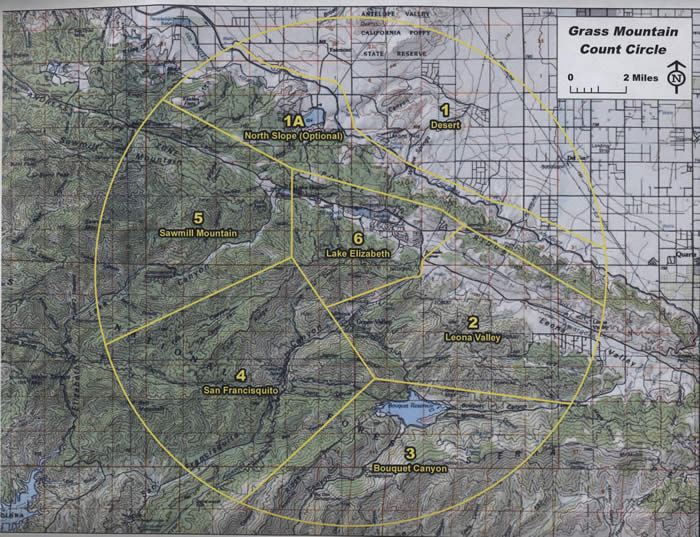
© 2013 Antelope Valley College
A CHRISTMAS BIRD COUNT TRAVESTY:
The Strange Case of Overlapping Count Circles in Los Angeles County, CA
Shown below is a Google Earth Map of the existing six-square mile overlap resulting from an error by Mr. Dan Cooper, advertising himself as a "Harvard-trained biologist," who established the Santa Clarita (CACI) CBC circle in 2003 and has been the principal compiler. Assisting Mr. Cooper was Geoff LeBaron, director of NAS CBC division. I have requested, through a series of emails to Mr. LeBaron, that NAS permanently correct this problem by either deleting the Santa Clarita count circle entirely, or relocating it in order to exclude the CAGM CBC circle, established with priority in 1972. NAS is ultimately responsible for such errors and insuring that new count circles do not overlap pre-existing count circles. The rule of non-overlapping count circles is explicitly stated in the NAS CBC guidelines. Mr. LeBaron's ( i.e. NAS's) final decision in this matter (January 27, 2014) was to remove the six square miles of overlap from the Santa Clarita count circle, thereby returning that area to the exclusive ownership of CAGM. Of course this ruling means that the Santa Clarita count circle loses six square miles of habitat. Furthermore, this convenient "solution" effectively propagates a fundamental error into perpetuity.

provided by NAS CBC 2013
CBC's and eBird: Citizen Science or Citizen Education?
© 2016 Callyn Yorke
Ever since my first Audubon Christmas Bird Count in the San Francisco Bay Area during the early 1970's, I have been impressed with the integrity of the National Audubon Society organization, particularly regarding accuracy and documentation of bird reports. Aside from cases involving overlapping count circles and related double-counting errors (see previous account), NAS generally does a fine job controlling the quality of its product. This is no trivial task. Among many possible problems facing NAS editors, is the issue of bird misidentifications. Beginners and experts alike make identification and quantitative errors during CBC's; such mistakes are often caught and examined closely by the CBC compiler and/or regional editors before the data are published in the annual report. Indeed, the fairly rigorous process of correcting CBC mistakes may discourage beginners (and some lofty experts) from further participation. Christopher Cokinos (Hope is the Thing With Feathers. 2000. pp.109-110) described this phenomenon with characteristic insight and charm.
Without a bird in the hand, observers have to rely on extremely precise descriptions of plumage, behavior and field conditions. At meetings of area birders who have just finished a census - such as the traditional Christmas Bird Counts, which gather data on wintering populations across the country - census leaders cast baleful glares at the claimants, grimly interrogating them for contradictions and weaknesses. The ornithological equivalent of a grand jury deposition, this procedure often causes the post-count chili supper to roil in the bellies of potential witnesses.
Perhaps to encourage folks without formal training in science to continue wrangling the maverick of quantitative bird surveys, an inspiring phrase was coined, Citizen Science. Officially deputized by the scientific community, everyone now wears a badge of distinction when participating in such projects as eBird surveys (Cornell Laboratory of Ornithology) and the National Audubon Society's Christmas Bird Count. However, when the party is over and the results are submitted, scientific skepticism is invited to raise its ugly head. This is for a good reason. Misidentifications of birds, the most common error, can end up rendering an entire data set next to useless for scientific purposes.
Aside from problems of misidentification, eBird data may be hopelessly muddled by inconsistent methodology, reducing Ornithology to an exercise in wishful thinking. A case in point: Mapping the annual spring and fall migration routes of the Calliope Hummingbird between Mexico and Canada:
https://www.allaboutbirds.org/annual-changes-in-hummingbird-migration-revealed-by-birders-sightings/
In a recent report (see above link) produced by Cornell University eBird division, a map was produced showing apparent east/west- shifted migratory routes for this tiny bird over a period of several years, based on an unspecified number of independent eBird reports collected from amateur observers. The Cornell authors claim that these migration maps accurately reflect migratory flexibility of this species, presumably in response to shifting resource availability. Conveniently, there is no mention of methodology, such as bird survey techniques and measurements of resource availability. If a student in any of my college biology classes (beginning or advanced) turned in such a paper, I would be hard-pressed to justify awarding a grade higher than "F."
Questions remain, e.g. Is Citizen Science a worthwhile effort? The answer depends on one's point of view. Let's clarify the primary objectives of the natural sciences and those of sport birding. Whereas the goal of science is to carefully and unequivocally advance our understanding of the natural world, sport-birding has a distinctly different objective - namely, to increase the length of a birder's personal list by day, year, yard, county, state, country or the entire planet. The latter objective now reaches the zenith of sport birding with the internet publication of the Cornell Laboratory of Ornithology eBird ranking of the top 100 birders, apparently based on the cumulative total of bird species found and frequency of their eBird reports.
Unfortunately, the scientific community and rational public are severely handicapped when trying to determine the authenticity of the eBird ranking system and/or the reliability of reports upon which it is based. This is an orbital issue with a pedestrian explanation. There will never be nearly enough experts available to review all incoming eBird reports. Furthermore, assuming 80% of eBird reports are reliable (a generous proportion by any measure), how would we identify the remaining 20% of erroneous reports? How many mistaken identifications equals a rejected eBird report? By convention, science tolerates a 5% probability of mistakenly accepting or rejecting testable hypotheses. Clearly, the hundreds (if not thousands) of daily eBird reports submitted throughout the United States could scarcely measure up to that level of reliability.
There is no question, however, that by encouraging folks to spend time in nature and systematically document their observations, another objective has been achieved -- raising public awareness of our dwindling natural resources. Some would argue that this particular benefit of Citizen Science outweighs whatever mistakes may be generated in the process of gathering data on bird populations and distributions. Yet, is the scientific community willing to accept the proliferation of errors in order to raise public awareness? Where is the line drawn between science and recreation? Should sport-birding be considered something akin to the Special Olympics of science?
I believe the public needs to appreciate the need for raising awareness regarding nature conservation, together with the need to maintain the integrity of the scientific method. Participation in eBird and CBC's ideally involves both goals. And if that means taking a measure of criticism, so be it. Beginners and experienced observers can and do make mistakes, particularly in the field under variable and sometimes harsh environmental conditions. Once everyone involved accepts this, there can be a true camaraderie in the endeavor, whether it be primarily for sport or scientific inquiry. Professional or amateur, we are all humbled by the grandeur of nature and wish to share our experience with anyone willing to step into that world of inquiry.
For nature lovers in general, science brings our view into sharp focus on topics such as ecology and conservation. We depend on the reliability of the scientific process to show us the facts. There can be no compromise nor loss of integrity regarding scientific methodology. Without reliable facts, we are unable to make rational decisions regarding wildlife conservation and management. If eBird and CBC data sets are shown to be reliable through a rigorous evaluation process, then we are on the right track. Meanwhile, we should seriously consider reclassifying Citizen Science projects as Citizen Education, comparable to what is done with students in medical and dental colleges. A disclaimer is signed by all participants, mistakes are made, casualties noted, and learning continues. Let's call eBird and CBC's what they actually are - a wonderful and worthwhile educational experience - instead of pretending what we would like them to be.
_____________________________________________________________________________________________________
Birds of the Grass Mountain Count Circle: A PHOTO GALLERY
Tundra Swan (rare) Lake Elizabeth (Area #6), January, 2011 © 2011 Callyn Yorke

Wood Duck (uncommon) Hughes Lake (Area #6) © 2010 Callyn Yorke
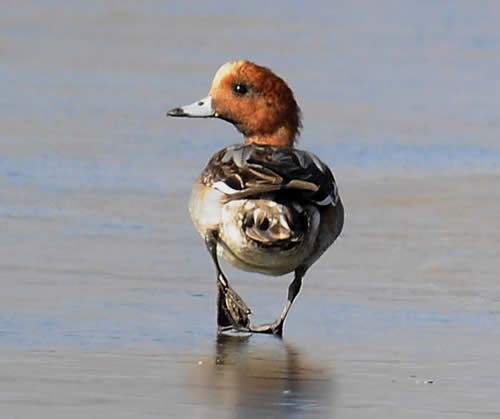
Eurasian Wigeon (rare) Hughes Lake (Area #6) © 2015 Callyn Yorke
'
Blue-winged Teal (rare) Elizabeth - Hughes Lake (Area #6) © 2011 Callyn Yorke

Lesser Scaup (left) and Greater Scaup (right) (common; uncommon), Calif. Aqueduct (Area #1) © 2014 Callyn Yorke
Common Goldeneye (uncommon) Calif. Aqueduct (Area #1) © 2013 Callyn Yorke
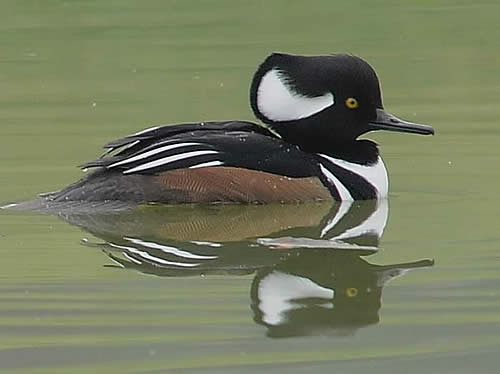
Hooded Merganser (uncommon) Elizabeth Lake (Area #6) © 2014 Callyn Yorke

Common Merganser (common) Elizabeth Lake (Area #6) © 2010 Callyn Yorke
Chukar (uncommon) North Slope (Area #1a) © 2012 Callyn Yorke
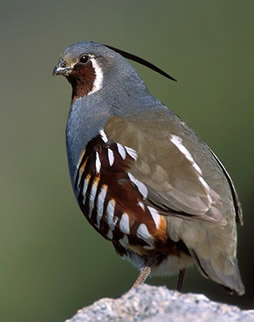
Mountain Quail (uncommon) Sawmill Mt. (Area # 5) © Brian E. Small
American Bittern (rare) Elizabeth Lake (Area #6) © 2010 Callyn Yorke
Cattle Egret (rare) Antelope Valley (Area #1) © 2013 Callyn Yorke
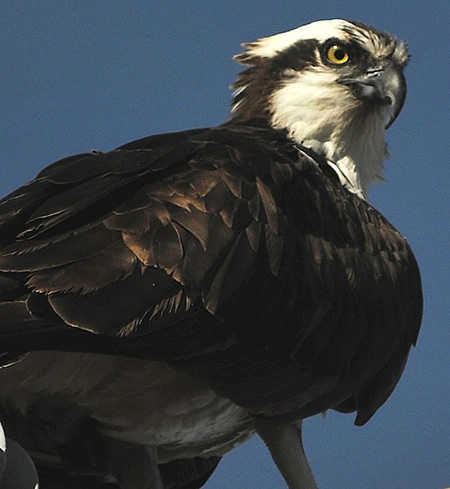
Osprey (uncommon) Elizabeth Lake (Area #6) © 2009 Callyn Yorke
White-tailed Kite (rare) Elizabeth Lake (Area #6) © 2013 Callyn Yorke
Bald Eagle (uncommon) Elizabeth Lake (Area #6) © 2012 Callyn Yorke
Northern Harrier (uncommon) Elizabeth Lake and Leona Valley (Area #5 & 6) © 2011 Callyn Yorke
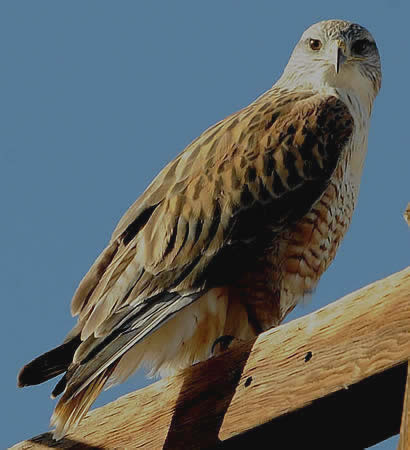 Ferruginous Hawk (common) Antelope Valley and Leona Valley (Area # 1 & 2) © 2014 Callyn Yorke
Ferruginous Hawk (common) Antelope Valley and Leona Valley (Area # 1 & 2) © 2014 Callyn Yorke
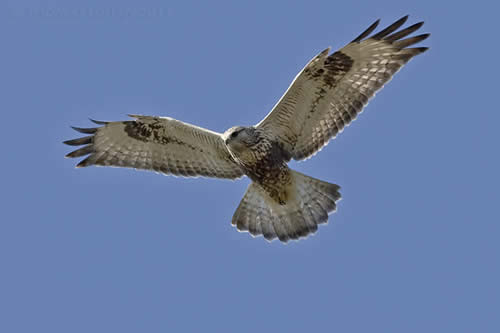
Rough-legged Hawk (rare) Antelope Valley (Area #1) © Thomas Luiten
Golden Eagle (uncommon) Antelope Valley (Area #1) © 2011 Callyn Yorke
Merlin (uncommon) Antelope Valley (Area #1) © 2011 Callyn Yorke

Prairie Falcon (common) Antelope Valley (Area #1) © Brian E. Small
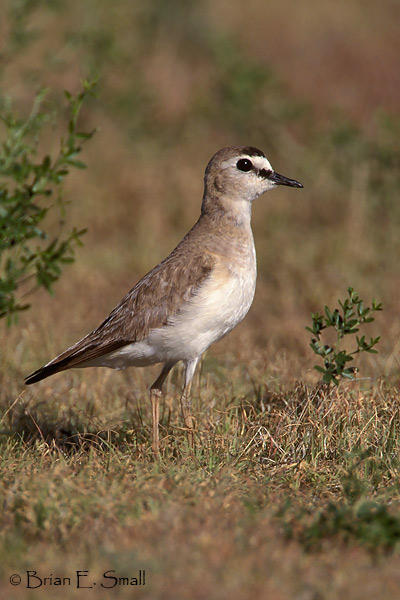
Mountain Plover (uncommon) Antelope Valley (Area #1) © Brian E. Small
Wilson's Snipe (uncommon) Elizabeth Lake (Area #6) © 2014 Callyn Yorke
Barn Owl (uncommon) Elizabeth Lake and Antelope Valley (Area #1, 1a & 6) © 2011 Callyn Yorke

Western Screech Owl (common) Elizabeth Lake (Area #6) © Brian E. Small
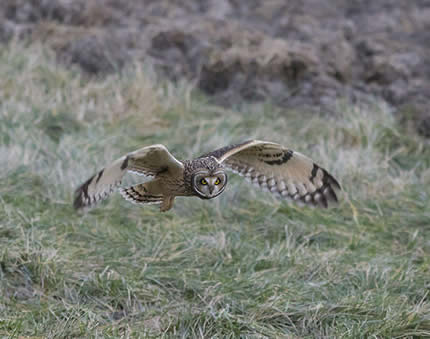
Short-eared Owl (rare) Antelope Valley (Area #1) © 2015 Vogeldagboek.nl
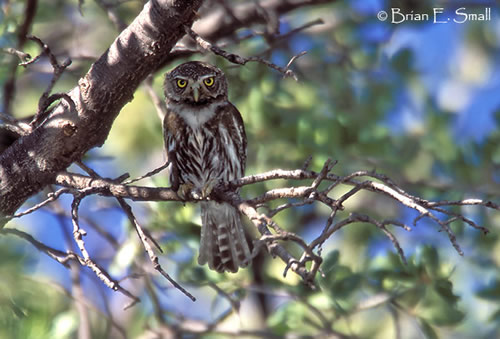
Northern Pygmy Owl (rare) Sawmill Mt. (Area #5) © Brian E. Small
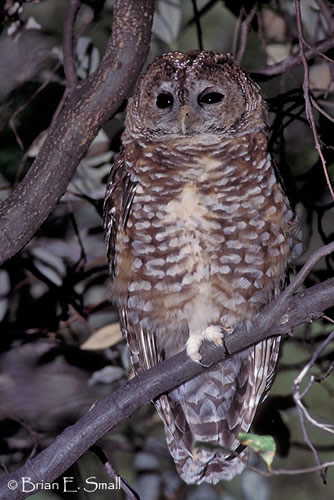
Spotted Owl (rare) Sawmill Mt. (Area #5) © Brian E. Small
Burrowing Owl (uncommon) Antelope Valley (Area #1) © 2011 Callyn Yorke
Long-eared Owl (uncommon) Antelope Valley (Area #1) © 2011 Callyn Yorke
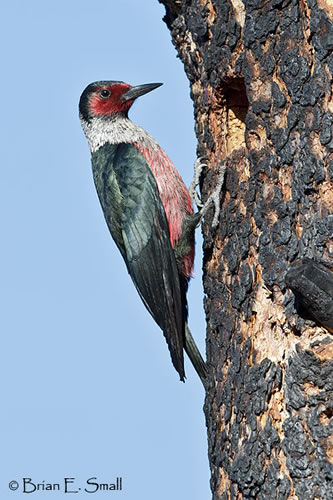
Lewis's Woodpecker (rare) Sawmill Mt. (Area #5) © Brian E. Small
Williamson's Sapsucker (rare) Sawmill Mt. (Area #5) © 2013 Callyn Yorke
Yellow-bellied Sapsucker (rare) Sawmill Mt. (Area #5) © 2013 Callyn Yorke
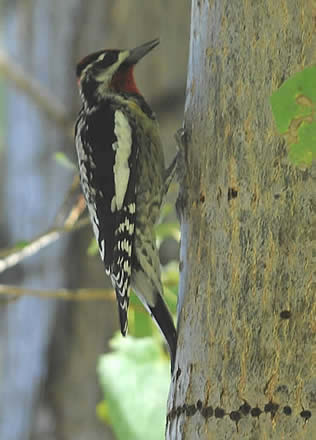
Red-naped Sapsucker (rare) Sawmill Mt. (Area #5) © 2014 Callyn Yorke
Red-breasted Sapsucker (uncommon) widespread except Area #1 © 2011 Callyn Yorke
Ladder-backed Woodpecker (uncommon) Antelope Valley (Area #1) © 2011 Callyn Yorke
Hairy Woodpecker (uncommon) Sawmill Mt. (Area #5) © 2012 Callyn Yorke

White-headed Woodpecker (rare) Sawmill Mt. (Area #5) © 2014 Callyn Yorke
Loggerhead Shrike (uncommon) Antelope Valley and Leona Valley (Area # 1 & 2) © 2010 Callyn Yorke
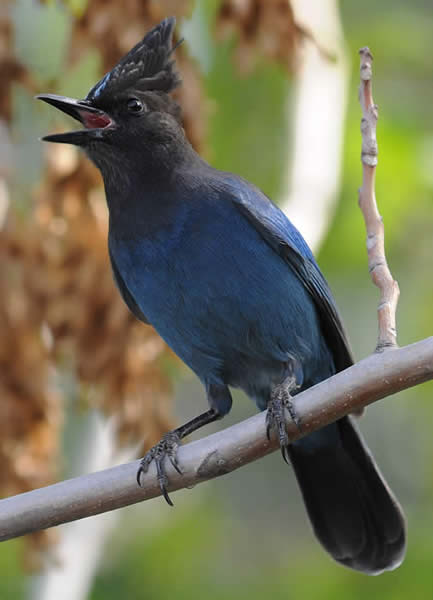
Steller's Jay (common) Sawmill Mt. (Area #5) © 2015 Callyn Yorke
Mountain Chickadee (common) Sawmill Mt. (Area #5) © 2011 Callyn Yorke
Verdin (uncommon) Antelope Valley ( Area #1), © 2010 Callyn Yorke
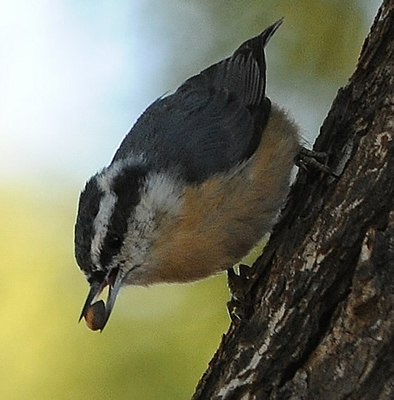
Red-breasted Nuthatch (common) Sawmill Mt. (Area #5) © 2012 Callyn Yorke
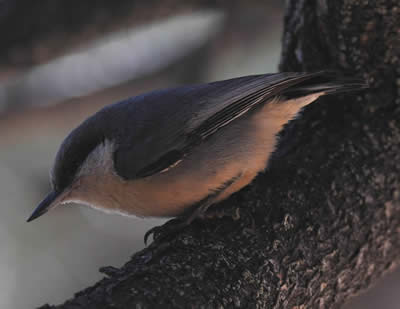
Pygmy Nuthatch (common) Sawmill Mt. (Area #5) © 2010 Callyn Yorke
Brown Creeper (uncommon) Sawmill Mt. (Area #5) © 2013 Callyn Yorke
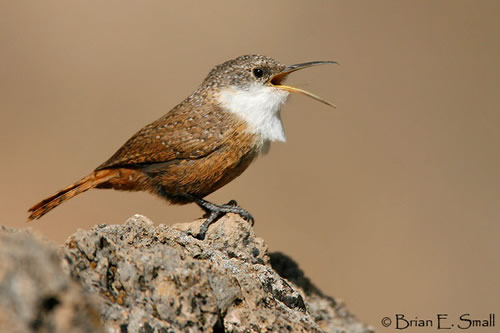
Canyon Wren (uncommon) Bouquet Canyon (Area #3) © Brian E. Small
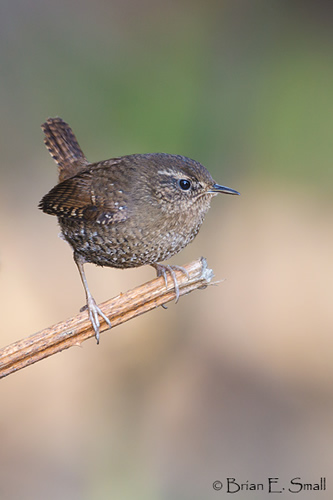
Pacific Wren (rare) Bouquet Canyon (Area #3) © Brian E. Small
Cactus Wren (uncommon) Antelope Valley (Area #1) © 2012 Callyn Yorke
American Dipper (uncommon) Bouquet Canyon (Area #3) © 2012 Callyn Yorke
Golden-crowned Kinglet (uncommon) Sawmill Mt. (Area #5) © 2012 Callyn Yorke
Wrentit (common) throughout except Area #1 © 2013 Callyn Yorke

Mountain Bluebird (common) Antelope Valley (Area #1) © 2011 Callyn Yorke
Townsend's Solitaire (uncommon) Sawmill Mt. (Area #5) © 2011 Callyn Yorke

Varied Thrush (rare) Bouquet Canyon (Area #3) © 2015 Callyn Yorke

Sage Thrasher (rare) Antelope Valley (Area #1) © 2012 Callyn Yorke
Yellow Warbler (rare) Elizabeth Lake (Area # 6) © 2011 Callyn Yorke
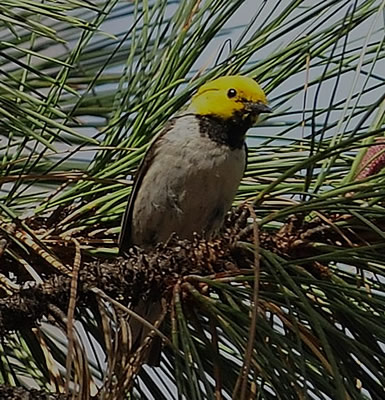
Hermit Warbler (rare) Sawmill Mt. (Area #5) © 2014 Callyn Yorke
MacGillivray's Warbler (rare) Bouquet Canyon (Area #3) © 2013 Callyn Yorke
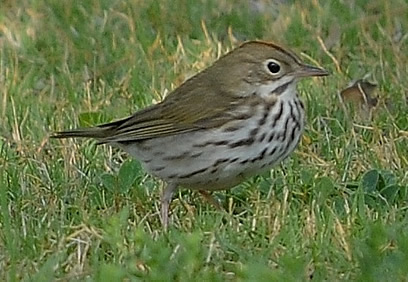
Ovenbird (vagrant) Bouquet Canyon (Area #3) © 2015 Callyn Yorke
Vesper Sparrow (common) Antelope Valley (Area #1) © 2012 Callyn Yorke
Black-throated Sparrow (rare) Antelope Valley (Area #1) © 2013 Callyn Yorke
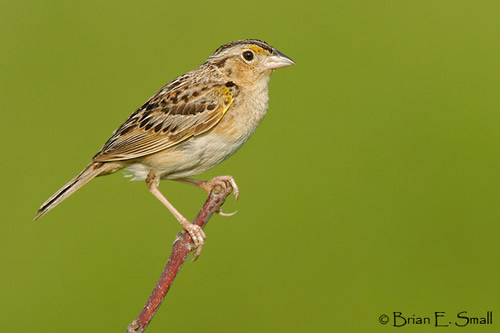
Grasshopper Sparrow (rare) San Francisquito Canyon (Area #4) © Brian E. Small
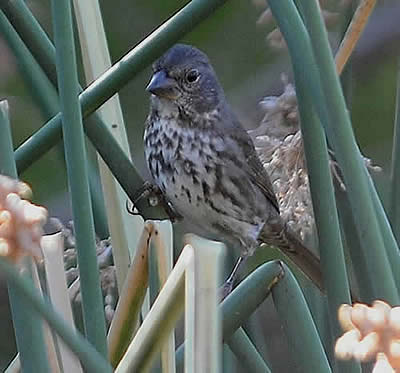
Large-billed Fox Sparrow (rare) Elizabeth Lake (Area #6) © 2014 Callyn Yorke
Swamp Sparrow (rare) Elizabeth Lake (Area #6) © 2012 Callyn Yorke

White-throated Sparrow (rare) Bouquet Canyon (Area # 3) © 2009 Callyn Yorke
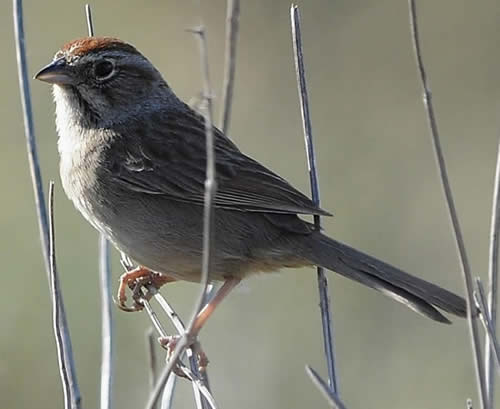
Rufous-crowned Sparrow (uncommon) Throughout, except Area #1 © 2015 Callyn Yorke
Pink-sided Junco (rare) Throughout, except Area #1 © 2011 Callyn Yorke Slate-colored Junco (uncommon) except Area #1 © 2011 Callyn Yorke
Tricolored Blackbird (uncommon) Elizabeth Lake (Area #1 & 6) © 2010 Callyn Yorke

Purple Finch (uncommon) Sawmill Mt. (Area #5) © 2014 Callyn Yorke
Cassin's Finch (rare) Sawmill Mt. (Area #5) © 2012 Callyn Yorke
Red Crossbill (uncommon) Sawmill Mt. (Area #5) © 2013 Callyn Yorke
Pine Siskin (common) Elizabeth Lake and Sawmill Mt. (Area #5 & 6) © 2011 Callyn Yorke
Evening Grosbeak (rare) Elizabeth Lake and Sawmill Mt. (Area #5 & 6) © 2012 Callyn Yorke
RESULTS OF THE DECEMBER 26, 2015 GRASS MOUNTAIN CBC
Participants: Kris Ohlencamp (Area 1; 5); Allaire & Chloe Koslo (Area #1a; 6); Becky Kitto, Jane Hines, Dan Ray, Verve Leps, Jayde Blair, Merissa Mendez (Area #2), Dan Byrne and Deb Anderson (Area # 3); Cal Yorke (Area # 4,5 & 6).
Time: 0630- 1830 hrs.
Mileage by car: 65
Mileage on foot: 14
Stationary Observations (Area # 2): 5 hours.
Weather: Fair; Temp. 32F to 45F; wind WNW 15 - 50 mph.
Elevational Range: 2,300 - 4900 ft.
Notable Environmental Conditions: Persistent high winds; regional drought continuing; east and central Elizabeth Lake a dry, alkaline sink.; west Elizabeth Lake reduced to a series of frozen puddles with Russian Thistles and Tumble Mustard; Lake Hughes completely dry. About 30 % of the CAGM area (largely in Areas # 5 & 6) severely impacted by fire (Powerhouse Fire of June 2013); recent (Oct. 2015) flooding and erosion.
SPECIES TOTAL: 79 (historical average = 94)
Count:
American Wigeon 30 (m,f) A6.
Eurasian Wigeon 1 (imm m) with AMWI, edge of pond, Elizabeth Lake Golf Course, A6; First CAGM record; initially found by CY at 0745 hrs. 12/26/15; subsequently, seen by others and re-found at the same location on 12/28/15 (photos).
Eurasian Wigeon (Anas penelope) same individual in both images, Elizabeth Lake (A6) LACO CA 28 Dec. 2015
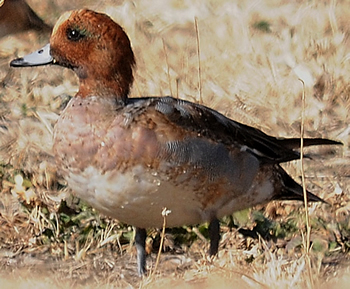
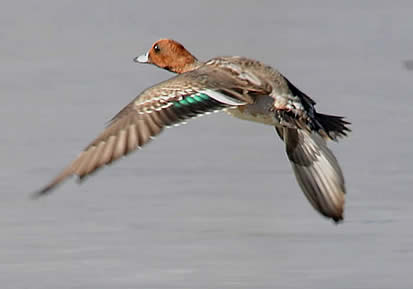
© 2015 Callyn Yorke
Mallard 4 (mf) A1;A6.
Northern Shoveler 16 (m,f) A6.
Northern Pintail 1 (f) A6.
Green-winged Teal 6 (m,f) A6.
Canvasback 8 (m,f) A6.
Ring-necked Duck 14 (m,f) A1; A6.
Lesser Scaup 15 (m,f) A1.
Scaup sp. (cf GRSC) 1 A1.
Bufflehead 15 (m,f) A1.
Common Goldeneye 5 A1.
Hooded Merganser 6 (m,f) A1; A6.
Ruddy Duck 22 (m,f) A1; A6.
California Quail 24 A2; A3; A4; A6.
Pied-billed Grebe 1 A6.
Great Blue Heron 2 A6.
Northern Harrier 1 A1.
Cooper's Hawk 1 A1.
Red-shouldered Hawk 2 A2; A3.
Red-tailed Hawk 7 A1; A2.
Ferruginous Hawk 1 A2.
American Kestrel 8 all areas except A2.
Merlin 1 A1.
American Coot 18 A2; A6.
Killdeer 1 A1.
Greater Yellowlegs 3 A1 (second CAGM record - KO).
Feral Rock Pigeon 10 ubiquitous, except A2.
Mourning Dove 22 A2; A1.
Eurasian Collared Dove 43 A1; A2; A6.
Barn Owl 3 A1a.
Great Horned Owl 1 A1a.
Burrowing Owl 1 A1a.
Anna's Hummingbird 1 A2.
Acorn Woodpecker 24 A2; A3; A5; A6.
Red-breasted Sapsucker 1 A3.
Nuttall's Woodpecker 2 A2; A6.
Downy Woodpecker 1 A2 (12/27/15).
Northern (RS) Flicker 24 ubiquitous.
Black Poebe 7 ubiquitous.
Say's Phoebe 3 A1; A2.
Loggerhead Shrike 2 A1.
Western Scrub-Jay 28 ubiquitous except A1, A1a.
American Crow 1 A2, A6.
Common Raven 42 ubiquitous.
Horned Lark 60 A1.
Mountain Chickadee 2 A5.
Oak Titmouse 9 ubiquitous except A1, A1a.
Bushtit 10 A2.
Bewick's Wren 1 A2.
Ruby-crowned Kinglet 9 ubiquitous except A1, A1a.
Western Bluebird 6 A6.
Mountain Bluebird 55 A1.
Hermit Thrush 24 ubiquitous except A1, A1a.
American Robin 8 A2, A5, A6.
Varied Thrush 4 A3.
Northern Mockingbird 2 A2; A6.
California Thrasher 1 A2.
European Starling 60 ubiquitous.
Yellow-rumped (A) Warbler 11 ubiquitous.
Spotted Towhee 26 ubiquitous except A1; A1a.
California Towhee 16 ubiquitous except A1; A1a.
Vesper Sparrow 6 A1.
Lark Sparrow 80 A1; A2.
Bell's Sparrow 2 A1.
Savannah Sparrow 110 A1.
Fox Sparrow (Western) 1 A2.
Song Sparrow 1 A6.
White-crowned Sparrow 212 ubiquitous.
Golden-crowned Sparrow 42 ubiquitous except A1; A1a.
Dark-eyed (Oregon) Junco 305 ubiquitous.
Red-winged Blackbird 14 A2; A6.
Tricolored Blackbird 15 A1a.
Western Meadowlark 120 A1; A6.
Brewer's Blackbird 250 A1.
Brown-headed Cowbird 10 A1a.
Purple Finch 2 A1.
House Finch 500 ubiquitous.
House Sparrow 20 A1; A6.
RESULTS OF THE DECEMBER 26, 2014 GRASS MOUNTAIN CBC
Compiled by Cal Yorke
Participants: Kris Ohlencamp (Area 1); Al DeMartini (Area 5 & 6); Becky Kitto, Jane Hines, Jerry Jacobs, Loreen Wilson, Roger Wing (Area 6), Sue Liberto (Area 2); Merissa Mendez (Area 2); Ethan Yorke, Cal Yorke (Area 2 & 3).
Time: 0515 - 1930 hrs.
Mileage by car: 55
Mileage on foot: 12
Stationary observations (Area 2 & 3): 5 hours.
Weather: Fair; 25F to 45F; wind N, NW 5 -7 mph.
Elevational range: 2,300 - 4,800 ft.
Notable Environmental Conditions: Regional Drought continuing. About 30% of CAGM (largely Areas #5 & 6) severely impacted by Powerhouse Fire of June 2013).
SPECIES TOTAL: 74 (historical average = 94)
Count:
Gadwall 3
Mallard 31
Northern Shoveler 9
Northern Pintail 2
Canvasback 13
Redhead 7
Ring-necked Duck 7
Lesser Scaup 15
Bufflehead 172
Common Goldeneye 7
Ruddy Duck 2
California Quail 2
Pied-billed Grebe 2
Red-tailed Hawk 8
Golden Eagle 1 (imm).
American Kestrel 3
American Coot 54
Killdeer 13
(Mountain Plover 40 + outside the count circle at 110th St. West and Avenue E - 8: AD)
California Gull 2
Feral Rock Pigeon 18
Band-tailed Pigeon 30
Eurasian Collared Dove 32
Mourning Dove 9
Great Horned Owl 2
Anna's Hummingbird 2
Nuttall's Woodpecker 4
Acorn Woodpecker 11
Northern (RS) Flicker 6
Black Phoebe 7
Say's Phoebe 1
Loggerhead Shrike 1
Steller's Jay 2
Western Scrub-Jay 25
American Crow 8
Common Raven 62
Horned Lark 10
Mountain Chickadee 2
Oak Titmouse 7
White-breasted Nuthatch 2
Rock Wren 2
Ruby-crowned Kinglet 4
Western Bluebird 46
Mountain Bluebird 37
Townsend's Solitaire 1 (AD: Area 5)
Hermit Thrush 8
American Robin 10
Varied Thrush 3 ( CY: Area 3)
Northern Mockingbird 4
European Starling 62
Wrentit 2
Cedar Waxwing 51
Phainopepla 5
Yellow-rumped (A) Warbler 18
Spotted Towhee 18
California Towhee 7
Vesper Sparrow 35
Lark Sparrow 51
Savannah Sparrow 5
Fox Sparrow 2 (Thick-billed (1) and Slate-colored (1): AD: Area 5)
Song Sparrow 13
Lincoln's Sparrow 5
White-crowned Sparrow 228
Golden-crowned Sparrow 6
Dark-eyed (Oregon) Junco 70
Red-winged Blackbird 24
Western Meadowlark 60
Brewer's Blackbird 2
Purple Finch 5
Cassin's Finch 2
House Finch 51
Pine Siskin 38
Lesser Goldfinch 28
Lawrence's Goldfinch 97
House Sparrow 10
RESULTS OF THE DECEMBER 14, 2013 GRASS MOUNTAIN CBC
Compiled by Cal Yorke
Participants: Kris Ohlenkamp (Area 1,3) Becky Kitto (Area 2,3), Merissa Mendez (Area 2), Allaire Koslo (Area 5,6), Cal Yorke (Area 2,3, 5 & 6).
Time: 0745- 1900 hrs.
Mileage by car: 90
Mileage on foot: 8
Stationary observations (Area 2) 2 hrs.
Weather: Fair; 39F to 50F; wind ENE 5 - 15 mph. Thin patches of snow in shaded canyons above 3,700 ft.
Elevation range: 2,300 - 4,200 ft.
SPECIES TOTAL : 66 (historical average = 94)
Count:
American Wigeon 1
Mallard 42
Northern Shoveler 8
Northern Pintail 1
Ring-necked Duck 2
Lesser Scaup 60
Bufflehead 216
Common Goldeneye 2 (Area 1: California Aqueduct)
California Quail 16
Great Blue Heron 2
Red-shouldered Hawk 1
Red-tailed Hawk 6
American Kestrel 4
Merlin 1
American Coot 30
Killdeer 3
Least Sandpiper 16
Ring-billed Gull 3
California Gull 22
Eurasian Collared Dove 2
Mourning Dove 13
Barn Owl 2
Great Horned Owl 1
Anna's Hummingbird 3
Acorn Woodpecker 15
Ladder-backed Woodpecker 1 (Area 1: Joshua Tree woodland)
Northern (RS) Flicker 6
Black Phoebe 12
Say's Phoebe 2
Loggerhead Shrike 4
Western Scrub-jay 35
Steller's Jay 1 (Area 5: Upper Shake campground)
American Crow 50
Common Raven 12
Horned Lark 25
Oak Titmouse 10
Rock Wren 5
Bewick's Wren 2
Golden-crowned Kinglet 1 (Area 5: Upper Shake campground)
Ruby-crowned Kinglet 2
Hermit Thrush 2
American Robin 2
Mountain Bluebird 1
Western Bluebird 22
Wrentit 2
Northern Mockingbird 3
California Thrasher 3
European Starling 15
American Pipit 4
Phainopepla 2
Yellow-rumped (A) Warbler 25
Spotted Towhee 5
California Towhee 3
Lark Sparrow 25
Bell's Sparrow 5
Savannah Sparrow 30
Fox Sparrow 1
Song Sparrow 20
Lincoln's Sparrow 12
White-crowned Sparrow 200
Golden-crowned Sparrow 4
Dark-eyed Junco 10
Western Meadowlark 15
Brewer's Blackbird 20
House Finch 130
Purple Finch 2
RESULTS OF THE DECEMBER 14, 2012 GRASS MOUNTAIN CBC
Compiled by Cal Yorke
Participants: Kris Ohlenkamp (Area 1); Jocelyn McFaul (Area 1a); Becky Kitto, Merissa Mendez and Cal Yorke (Areas 3 & 6).
Time: 0700 - 1800 hrs.
Mileage by car: 100
Mileage on foot: 7
Weather: Partly cloudy to overcast with increasing WSW wind 2 - 8 mph; rain from 1330 - 1730 hrs. Temperature 31F to 42F. No snow.
SPECIES TOTAL: 70 (historical average = 94)
Birds of seasonal and/or distributional interest found: Burrowing Owl (1), Short-eared Owl (1).
COUNT
American Wigeon 1
Mallard 30
Northern Shoveler 60
Northern Pintail 1
Canvasback 25
Bufflehead 22
Common Goldeneye 2
Common Merganser 1
Ruddy Duck 50
California Quail 10
Eared Grebe 2
Western Grebe 2
Double-crested Cormorant 5
Great Blue Heron 4
Great Egret 1
Red-shouldered Hawk 2
Red-tailed Hawk 2
Ferruginous Hawk 5
American Kestrel 4
Prairie Falcon 1
American Coot 150
Killdeer 2
Least Sandpiper 14
Wilson's Snipe 2
California Gull 2
Rock Pigeon 2
Eurasian Collared Dove 4
Mourning Dove 8
Burrowing Owl 1
Short-eared Owl 1: (by KO, Area 1); Details: Seen at 0745 hrs. north of Avenue J at about 130th Street East. I was on foot walking north when it flushed from the ground about 20 m away and flew north. I first noticed the long wings and thought Harrier.Then the large blunt head became obvious and I knew it was an owl. I thought Burrowing Owl but the longish wings puzzled me. As it flew away (less than 3m off the ground) I also noticed black wing tips and black marks near the shoulders. It landed about 200 m away - facing me. It seemed taller than a Burrowing Owl and did not have any noticeable ear tufts. I could not make out details of the face. By the time I retrieved my scope - the bird was gone. One hour later I returned to the same location in hopes that it also may have returned. This time I flushed what was definitely a Burrowing Owl - from almost the same spot. The differences between the two birds were striking - Kris Ohlenkamp, 12/14/2012.
Belted Kingfisher 1
Acorn Woodpecker 4
Nuttall's Woodpecker 2
Northern (RS) Flicker 8
Black Phoebe 2
Say's Phoebe 2
Loggerhead Shrike 2
Western Scrub-jay 10
American Crow 85
Common Raven 52
Horned Lark 600
Moountain Chicadee 1
Oak Titmouse 2
Bushtit 8
Bewick's Wren 2
Ruby-crowned Kinglet 20
Western Bluebird 2
Mountain Bluebird 30
American Robin
Northern Mockingbird 2
European Starling 75
American Pipit 5
Cedar Waxwing 6
Yellow-rumped Warbler 8
California Towhee 6
Rufous-crowned Sparrow 1
Vesper Sparrow 3
Lark Sparrow 10
Savannah Sparrow 45
Song Sparrow 12
Lincoln's Sparrow 1
White-crowned Sparrow (gambeli) 120
Golden-crowned Sparrow 1
Dark-eyed Junco 25
Western Meadowlark 50
Brewer's Blackbird 50
Great-tailed Grackle 8
House Finch 200
American Goldfinch 1
House Sparrow 25
RESULTS OF THE DECEMBER 16, 2011 GRASS MOUNTAIN CBC
' Compiled by Cal Yorke
Participants: David Bell (Area 1); Jocelyn McFaul (Areas 1a & 5); Cal Yorke and Merissa Mendez (Areas 5&6)
Time: 0630 - 1830 hrs.
Mileage by car: 101
Mileage on foot: 6
Weather: Fair; 34 to 52F; 2-4 inches of snow above 4,000 ft. Wind ENE 2 - 10 mph.
SPECIES TOTAL: 86 (historical average = 94)
Birds of seasonal and/or distributional interest found: Hooded Merganser (20 - new for the GMCBC); Great Egret (1); White-tailed Kite (1); Merlin (3); Turkey Vulture (2); Eurasian Collared Dove (2 - new for the GMCBC); White-headed Woodpecker (1); Great-tailed Grackle (8).
Link to details and photos for Areas 5 & 6
COUNT
Gadwall 2
American Wigeon 80
Mallard 182
Northern Shoveler 4
Green-winged Teal 5
Canvasback 12
Redhead 2
Ring-necked Duck 14
Lesser Scaup 2
Bufflehead 60
Common Goldeneye 12
Common Merganser 16
Hooded Merganser 20
Ruddy Duck 123
California Quail 30
Pied-billed Grebe 20
Western Grebe 12
Double-crested Cormorant 1
Great Blue Heron 4
Great Egret 1
Turkey Vulture 2
White-tailed Kite 1
Northern Harrier 3
Cooper's Hawk 1
Red-shouldered Hawk 2
Red-tailed Hawk 21
Ferruginous Hawk 3
American Kestrel 10
Merlin 3
Prairie Falcon 2
American Coot 303
California Gull 4
Rock Pigeon 5
Band-tailed Pigeon 4
Mourning Dove 69
Eurasian Collared Dove 2
Greater Roadrunner 3
Anna's Hummingbird 1
Lewis's Woodpecker 4? in flight (Upper Shake Campground - Area 5).
Acorn Woodpecker 4
Nuttall's Woodpecker 2
White-headed Woodpecker 1
Northern (RS) Flicker 2
Black Phoebe 4
Say's Phoebe 4
Loggerhead Shrike 10
Steller's Jay 8
Western Scrub-jay 9
American Crow 17
Common Raven 153
Horned Lark 1,540
Mountain Chickadee 8
Oak Titmouse 4
White-breasted Nuthatch 3
Brown Creeper 1
Cactus Wren 7
Rock Wren 1
Bewick's Wren 5
Ruby-crowned Kinglet 3
Western Bluebird 14
Mountain Bluebird 45
Hermit Thrush 1
Wrentit 2
Northern Mockingbird 6
European Starling 255
American Pipit 3
Yellow-rumped (A) Warbler 13
Common Yellowthroat 2
Spotted Towhee 4
California Towhee 9
Vesper Sparrow 1
Lark Sparrow 529
Savannah Sparrow 28
Song Sparrow 20
Lincoln's Sparrow 1
White-crowned Sparrow 197
Golden-crowned Sparrow 50
Dark-eyed (Oregon) Junco 60
Red-winged Blackbird 20
Western Meadowlark 71
Brewer's Blackbird 355
Great-tailed Grackle 8
Purple Finch 40
House Finch 602
Lesser Goldfinch 2
House Sparrow 21